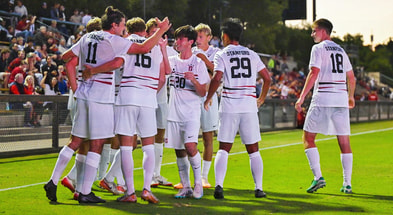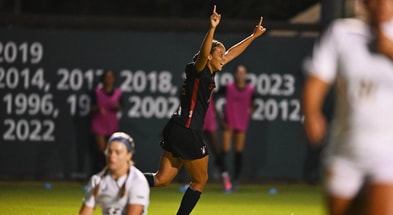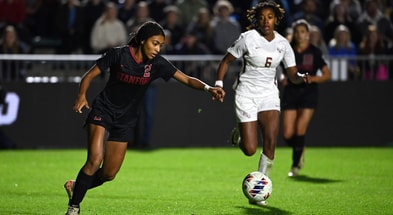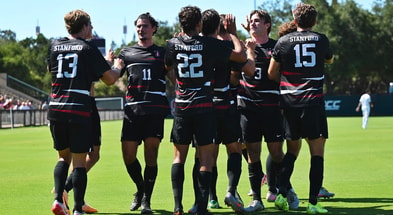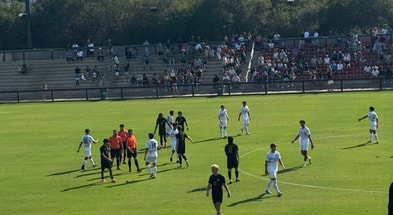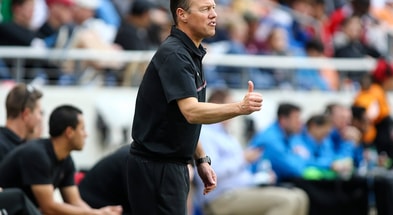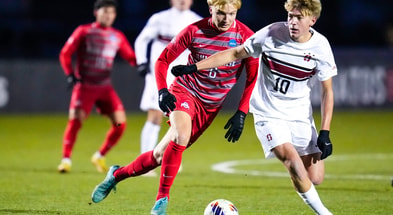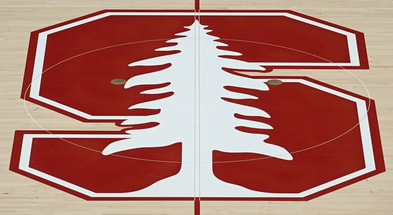Reflections on year one in the ACC: Stanford
One year ago, Stanford was set to embark on their first year as members of the ACC. So many questions swirled about how they would stack up against the competition, how they would fit with the overall culture of the league, and how they would manage the travel. Now that they have a full year under their belts in the ACC with all the sports having completed one season in the league, I thought it would be good to provide some thoughts on how things went for the Cardinal in the ACC and what the outlook is for them in year two as they expect to have a new athletic director named in the coming weeks.
Starting with the competition aspect, Stanford held their own as well as could have been expected relative to how they were doing in the Pac-12:
Fall
Football went 3-9 overall notching wins over Cal Poly, Syracuse, and Louisville, making for a 2-6 ACC record. The win at Syracuse being on the road early on in the season. The previous seasons in the Pac-12 had also been 3-9, so there wasn’t really a drop off though also no improvement.
Looking at women’s soccer, they went 16-5-2 overall and 5-4-1 in the ACC, losing to ACC foe Wake Forest 0-1 in the NCAA tournament semifinal (College Cup). They held their own as well as they had in the Pac-12 and were able to navigate the ACC league just fine. Men’s soccer lost in the third round of the NCAA tournament, but notched some impressive wins, most notably at then No.2 Clemson in September by a final score of 3-2. They went 9-5-6 overall and 3-2-3 in the ACC.
As for women’s volleyball, they went 28-5 overall and 17-3 in ACC play, once again falling in the regional final (Elite Eight) of the NCAA tournament for the third straight year. They had another strong season and competed up to the same level that they did in the Pac-12.
Winter
Switching gears to hoops, men’s basketball had their best season in recent memory, going 21-14 overall and 11-9 in the ACC, led by big man Maxime Raynaud, who is now in the NBA with the Sacramento Kings. They won an NIT game and exceeded expectations. Women’s basketball was ranked at one point of the season, but didn’t have nearly as good of a season as they’re used to having, going 16-15 overall and 8-10 in the ACC. They reached the WBIT, losing in the first round to Portland at home in overtime. With star forward Kiki Iriafen having departed for USC, that made for a tough season that they hopefully will look back on as a growth year given the influx of talent they have coming in.
Spring
Moving onto the spring, softball was a pleasant surprise, going 42-13 overall and 16-8 in the ACC. Despite losing their star pitcher NiJaree Canady to Texas Tech, the Cardinal nearly got out of the regional round of the NCAA tournament, losing to Oregon 7-10 in the deciding game. Had they won that, they would have been a three-game series against Liberty away from reaching the Women’s College World Series.
Regarding baseball, they really struggled, going 27-25 overall and 11-19 in the ACC. Despite having a talented freshman Rintaro Sasaki bringing in a lot of buzz, the pitching really fell off a cliff and they were unable to keep up with the arms of the ACC. It was a rude awakening for the Cardinal after previously being one of the top programs in the Pac-12. I should note, they went 22-33 overall and 11-19 in the Pac-12 last year, so it wasn’t like they were entering the ACC with a lot of momentum.
READ: Stanford Baseball needs to get their pitching back on track
To round things out with tennis, the final two sports this site regularly covers, both teams did well. Men’s tennis went 26-6 overall and 10-3 in the ACC, losing to Wake Forest in the NCAA tournament semifinals. They won their final home match of the NCAA tournament, defeating South Carolina 4-0. As for women’s tennis, despite dealing with a lot of injury, they were still able to make some noise, going 17-9 overall and 7-5 in the ACC. They narrowly fell to Oklahoma State in the NCAA tournament Super Regionals, after winning their first two rounds.
Big picture
When looking at all these sports, the only sport I would say that was really in for a rude wakeup call regarding the competition is baseball. The baseball teams in the ACC are at another level with respect to their pitching. They have their work cut out for them to get back to being a top program. Though that isn’t to say it won’t or can’t happen. I think in many ways it was good for them since the ACC teams were already waiting for them when they did reach the College World Series.
With respect to the rest of the sports, there was nothing stylistic about the ACC that made it tougher. Football struggled, but that was because they were just not very good. Women’s basketball struggled, but losing Kiki Iriafen was the biggest reason for that. And then the rest of the sports either did as well or better. So, there’s no reason to think Stanford can’t hang with the ACC.
As a matter of fact, if you are Stanford, you wanted to make sure you went to a quality league that challenges you and wasn’t a drop off from the Pac-12. The ACC was certainly no drop off and in the case of soccer and baseball, it was arguably a step up. In the case of women’s volleyball and softball, you could argue it was weaker than the Pac-12, but there were still quality teams they had to go up against.
Travel
The biggest question coming into the ACC for Stanford and their Bay Area rival Cal was the travel aspect. Having each other helps a bit in that respect as they are only 40 miles apart from each other. It especially helps in sports where they play each other twice in league play like basketball and volleyball. But across the board, having each other does help a bit with travel. And then the presence of SMU lightens the load some as a flight to Dallas, Texas is approximately three hours.
But outside of that, the rest of the teams are in Florida, Massachusetts, New York, North Carolina, South Carolina, Indiana, Kentucky, Georgia, Pennsylvania, and Virginia. On paper, that makes for a challenging travel situation. Of course, given how Stanford’s teams did, I don’t think one can say the travel hurt Stanford much. The same goes for Cal. That doesn’t mean it was easy for them, but they were able to manage it fine and then hey, there’s a certain home court/home field advantage they get by being three hours behind the East Coast schools when those teams come to town. The travel isn’t easy on those teams either when they come out West.
That all being said, there are some things the ACC can do to make the travel more manageable for Stanford and Cal. I think with football, things are fine as they are given the one game a week arrangement. Not to mention the fact that the ACC plays only eight conference games. The travel Back East isn’t easy for football, but it’s manageable. Especially if they can at least get one road trip in which they have two games. E.g. Last year they had the Syracuse and Clemson road games in back-to-back weeks.
Baseball and softball, since you only play one team a week in a three-game series, I think things are overall fine on that front. They could explore the possibility of having two straight weeks on the road, but aside from that, I think they got a pretty good arrangement figured out there.
The two sports that I think could use some improvement with travel is basketball and volleyball. Namely, I think four game/match road trips should be used at least once in the schedule. Volleyball has one this coming season when they’ll be on the road to face Clemson, Georgia Tech, NC State, and Wake Forest between October 24th and October 31st.
The back and forth travel I think is especially tough. If they can figure out ways to have even one four-game road trip per season, that would help a lot. Four game/match road trips would help Stanford and Cal settle in and get comfortable in the region before heading home. In truth, it would be great if they could do two road trips of four games/matches per season. Just get the road games out in chunks. That would make it two to three East Coast trips per season as opposed to three to four.
One change/improvement that has happened for basketball is travel pairings. As an example, Duke and North Carolina are partners which means if you play at Duke on the road, you’ll also play at North Carolina on the same trip. The combination of four-game road trips combined with travel partners that are in close proximity to each other could make the travel even more manageable for Stanford and Cal.
The last thing I’ll say on the travel piece is it would help if the ACC could find a way to expand to 18-20 teams. Presently they are at 17 (16 in football with Notre Dame being independent). If the ACC wants to expand to 18 teams, two schools jump out as great fits both from academic and athletic perspective:
The first school that comes to mind is Tulane, located in New Orleans, Louisiana. Tulane is a strong academic school that is only a 90-minute flight away from Dallas. Having them as a travel partner with SMU would be great, giving Stanford and Cal one lighter road trip per season. Tulane has showed promise in football and hoops, making them a solid addition.
The other school is Rice, located in Houston, Texas. They’re not a great athletic program, but they are an excellent academic school and would be a super convenient travel partner with SMU. Every league can have one powder puff program and Rice could fill that role. Plus, perhaps a move to the ACC would actually improve the quality of their athletic programs. You never know.
If the ACC were to want to expand to 20 teams, they could add Tulane or Rice and then add a pairing out West. The first pairing that comes to mind is Utah and BYU. Both have strong traditions in football and hoops. They are only an hour and change away from the Bay Area and along with SMU/Tulane or SMU/Rice could form a nice little six team Western pod.
Being on the western edge of the Big XII, Utah and BYU are already used to a lot of travel and might actually like having a pair of West Coast schools to be paired with. As an added bonus, the ACC is a higher class of academic schools and that is something that I think would appeal to both BYU and Utah.
I don’t see expansion happening to the ACC anytime soon and I’m sure BYU and Utah are perfectly content in the Big XII. They fit that league well in a lot of ways. Still, as the ACC looks to make things more manageable on the travel front, they should consider adding some schools out West if the opportunity arises.
Parting thoughts
When reflecting on year one of the ACC for Stanford, I think it overall went better than expected. The travel was challenging, but there are things that can be done and are being done to make it more manageable. As for the overall athletic and academic fit, I think they landed in the best spot they could have. Virginia, Duke, North Carolina, Boston College, Wake Forest, and Notre Dame are world class universities that are well aligned with the academic standards that Stanford and Cal have while also caring a great deal about all their athletic programs. Not just football and basketball.
Looking ahead to year two, Stanford should have confidence that they can compete in the ACC to the same level that they did in the Pac-12. The only thing that’s holding them back is whatever issues their specific teams need to address. And those are issues that would have been there had they still been in the Pac-12. It should be fun to see what the coming year holds on The Farm and also who the new athletic director will be.
CardinalSportsReport.com on Facebook, IG, Threads, X (Twitter), & Bluesky: @StanfordRivals
Ben Parker on Facebook, IG, Threads, X (Twitter), YouTube, & Bluesky: @slamdunk406
Email: [email protected]
